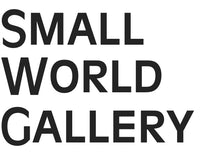The Art of Seeds
Garden seeds might seem out of place in an art gallery — but not to me. Seeds are a nice fit in Small World Gallery.
Drop into the gallery and you’ll see a beautiful display, full of heirloom garden seeds just waiting for the right hands to scoop them up and cherish their diverse histories. These particular seeds are linked with my career at National Geographic in research, writing and photographs going back 25 years.
In 1994 I began work on our story on sustainable agriculture, which took me to farms all over the U.S. Among those locations was Seed Savers Exchange Heritage Farm in Decorah, Iowa. Seed Savers’ mission fit our story: to preserve the world’s endangered garden heritage for future generations. Seed Savers does this by collecting, preserving and — most important — sharing seeds with the public.
Co-founder Diane Ott Whealy got the idea when she was bequeathed seeds that her great-grandfather brought to the U.S. from Bavaria in 1870, including some morning glory seeds. Thanks to this effort, you’ll NOW find Grandpa Ott’s morning glories blooming all over the world, including out back at Small World Gallery. Today Seed Savers distributes more than 20,000 varieties of endangered seeds among 13,000 members.
Seed Savers was a delightful place to take pictures. I marveled at its lush gardens in a secluded valley surrounding a classic red barn. The place and its mission stuck with me. In 2002 I proposed to National Geographic that we should expand our coverage to focus on the role that seed banks play in preserving the 13,000-year-old heritage of domesticated crops and livestock, which is the foundation of our contemporary food system. It took awhile but we got it done — nine years later in 2011.
That story, titled Food Ark, took me around the world — places like Peru, where I photographed potatoes at 14,000 feet in the Andes. Places like Ethiopia, where some of the first grains were domesticated in pre-historic times. Places like the Arctic, home of the Svalbard Global Seed Vault.
The Svalbard Seed Vault is how I found my extremities freezing on an Arctic mountain slope in Spitzbergen. I was photographing seed vault founder Cary Fowler holding glass tubes full of seeds and looking over my shoulder on guard for approaching polar bears. This seed vault is three rooms dug into a frozen mountain, and it has one purpose only: save the world’s agricultural heritage in case of cataclysmic events. Today it holds more than 1 million seed samples — precious backup copies from the world’s other seed banks. I feel honored to be one of the few photographers to see the inside of this singlular place. It’s not necessarily a marvel until you remember that here lies the single greatest collection of seeds in the world.
Thus, seeds are in my photographic DNA. From a tiny village in Ethiopia where women guarded their seeds at home to the prestigious Kew Millennium Seed Bank outside London, it’s been a rich journey full of wonder and beauty.
This spring here at Small World Gallery, we’d like to share our love of seeds with you, tell you some stories, share some images, and encourage you to become part of the cycle of growing — and guarding — the fruits and vegetables our ancestors brought with them. Seed Savers makes their seeds in 600 stores across America. We’re proud to be one of them.

